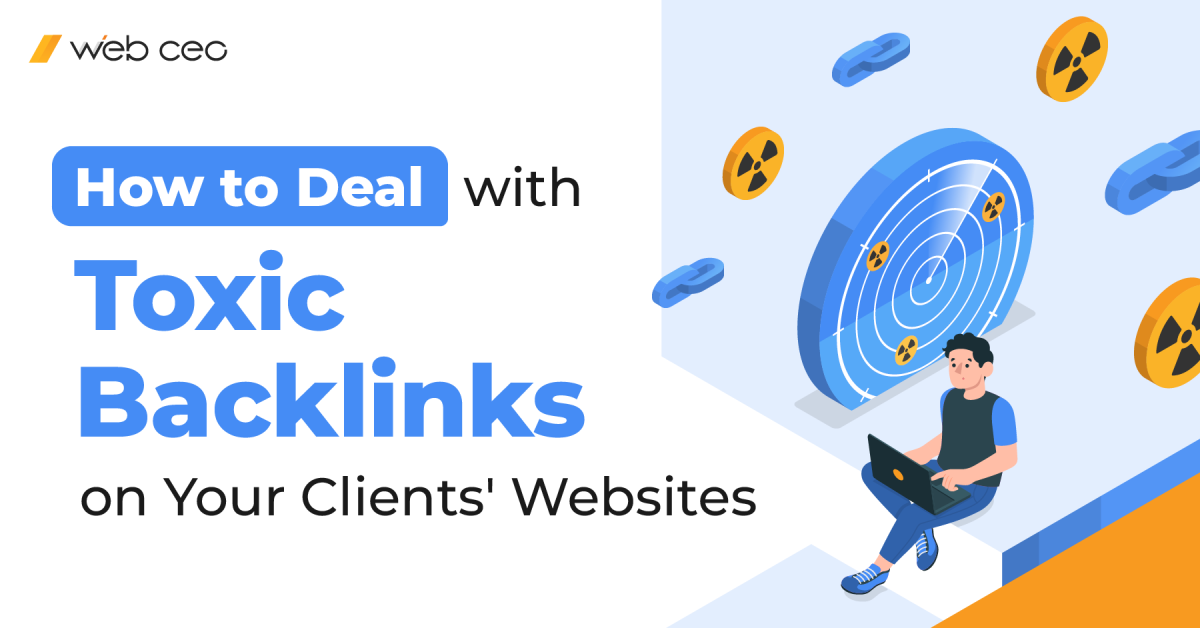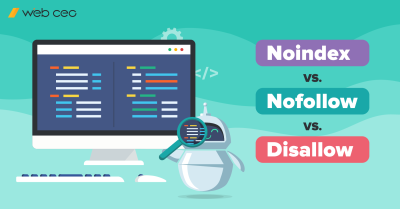
What actions should you take if your clients begin to lose their rankings in search engines? There’s no simple answer because the reasons can be multifaceted—ranging from algorithm updates and site speed issues to the more insidious problem of toxic links.
In particular, toxic links can stealthily undermine your hard-earned SEO results, making it essential to react promptly and effectively when they arise.
In this article, we will explore the nature of toxic links, guiding you through the process of identifying, managing, and mitigating their impact.
We’ll also share an insightful use case from WebCEO, illustrating how we overcame the challenges posed by toxic links to restore our search engine visibility.
Why Toxic Links Exist And Who Benefits From Them
In the quest for quick results, some people turn to black hat SEO techniques, generating or purchasing low-quality backlinks to artificially inflate a site’s authority.
While this might yield short-term gains, it’s a ticking time bomb, as search engines are becoming increasingly sophisticated in detecting such manipulative behavior. The fallout can be severe, leading to penalties that can dramatically reduce a site’s visibility.
The motives behind toxic link creation can be as varied as the sources. Here’s a closer look at the key players:
Competitors might use negative SEO tactics to sabotage your rankings. By creating toxic links to your site, they aim to trigger penalties from search engines, causing your site to lose visibility.
Spammers and Scammers might place links indiscriminately across the web, hoping for clicks or interactions that generate revenue, regardless of the quality or relevance.
Hackers and cybercriminals may exploit backlinks to spread malware or phishing schemes. These toxic links not only harm your clients’ SEO but can also compromise user safety and trust in their brand.
Who Is Most Vulnerable to Toxic Links?
The sites that should be most concerned about toxic links are those that lead their niche and consistently rank at the top of Google.
Competitors desperate to climb to the top of the search results might resort to underhanded tactics, flooding your clients’ sites with toxic links to knock them off their perch and take their place in the SERPs.
Traffic and money are powerful motivators.
The second category includes SEO “experts” who create numerous satellite sites that link indiscriminately, spamming the web with links. There’s a chance one of these links could end up pointing to one of the websites you’re responsible for.
In essence, there are two primary objectives behind the creation of toxic links, both straightforward: to boost another site in the rankings and to demote the sites of the competitors.
The problem is that “toxic” SEO practitioners often fail to understand that links alone won’t deliver the desired results. They are wasting their own time and that of their victims.
SEO is a complex field where links play a role, but without quality content and a solid product, they won’t achieve much. Let’s strive for a deeper understanding and maintain control over this aspect of SEO. WebCEO’s Toxic Backlink Checker will be our ally in this endeavor.
When You Should Be Nervous About Toxic Links
Despite the damage toxic links can cause, there’s no need to lose sleep over them every night. Instead, set up an alert system in WebCEO that notifies you when the percentage of toxic links reaches a certain threshold.
To set up an alert using WebCEO, go to the Alert tool and create a new alert.
Navigate to the backlinks section and choose the percentage of toxic links at which the alarm will trigger. We recommend setting it between 20-25%.
Once you’ve set up an alert, there’s no need to check toxic links unless your client’s rankings drop.
If you notice a drop in rankings, start diagnosing the issue.
Sometimes it’s obvious, sometimes it’s not. When you see a traffic drop, check the site step by step.
Verify On-Page SEO, review the content, and rule out any other technical issues before finally examining the backlinks.
React to toxic links as they happen. They won’t cause an immediate drop in your rankings.
Instead, if rankings fall, that’s the exact time when you need to inspect the backlinks.
With our Toxic Link Checker Tool, you can identify potential toxic links on a client’s project and quickly add them to your disavow list.
In the report, you can see the pages and sites that link to you and might be toxic. If you notice a traffic or ranking drop, address these links by cleaning them up.
To do this, select the links you want to move to the Disavow Tool and click the Action button on the right. Here, you can move specific pages or entire domains to the disavow tool or mark links as non-toxic.
Ultimately, your task is to compile a disavow list with all the links you consider toxic for your clients and upload it via your Google Search Console connection to Google’s Disavow Tool.
How WebCEO Overcame Toxic Links and Regained Its Rankings
Our own site, WebCEO, isn’t immune to toxic links either. We received an alert indicating a significant increase in toxic backlinks, which eventually led to a drop in our rankings.

Once we compiled a new disavow list and removed all the toxic links, our rankings began to improve within a few weeks.
However, as seasoned SEO professionals, we recognize that the rise in rankings could be attributed to a combination of factors. While removing toxic links likely played a significant role, we were also actively working on improving our site speed during this period.
This experience underscores the importance of a comprehensive SEO strategy, where addressing toxic links is just one piece of the puzzle.
Final Word
In SEO, everything works synergistically, so don’t expect that removing toxic links from your client’s site will immediately result in a flood of traffic.
Success in SEO is the result of multiple factors working together, and the more factors you optimize, the better.
The overall health of your client’s site will significantly influence growth in metrics. While the Disavow Tool can be a valuable asset, it won’t single-handedly drive traffic or profit.
Try our 14-day free trial (no credit card required) to always control your clients’ backlink profiles and deal with toxic links if they arise.


